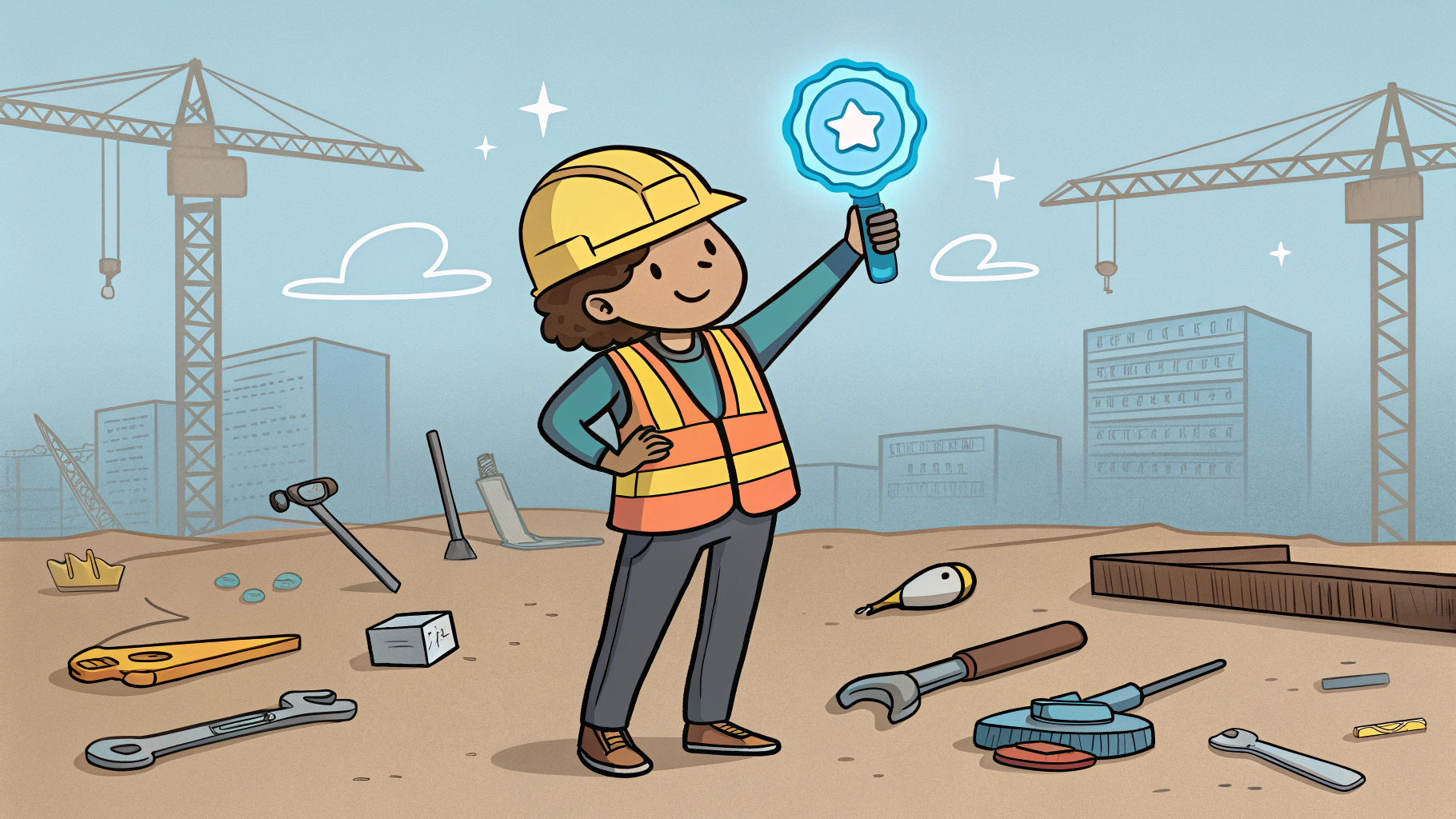The demand for skilled workers keeps growing, but we’re still relying on paper certificates and spreadsheets to match skilled workers with jobs. This is a huge problem when over 2.3 million skilled trade jobs are projected to sit unfilled by 2028 according to U.S. Bureau of Labor Statistics. Digital tools are finally changing this. Electronic credentials, digital tracking platforms, and skill badges are solving real problems for people building careers and businesses staying competitive. Here's how these digital solutions are reshaping hiring, training, and daily operations.
Building Systems That Work for Real People
The most effective digital systems speak human, not robot. Take the International Telecommunication Union’s approach, their toolkit replaces technical jargon with plain language, using bullet points and annotated screenshots to explain complex processes 1. When Ohio plumbing trainers simplified their material into step-by-step checklists with video demos, apprentice retention jumped 34% in six months 2.

- Start with what workers actually need
- Map skills to global standards
- Let users shape the system
Systems thrive when they align with frameworks like Europe’s DigComp, which breaks digital skills into five clear areas: finding info, communicating online, creating content, staying safe, and solving tech problems. This gives employers a universal language to assess abilities, while apprentices gain mile markers for progress.
For instance, a Michigan welding program added a “confused?” button beside each tutorial, letting apprentices flag unclear steps. Trainers now update materials weekly based on these alerts, which is a practice that cut repeated questions by 52% 1.
Apprenticeships Get Smart: How Tech Accelerates Learning
Today, IPC’s registered apprenticeships use digital portfolios where electricians upload soldering videos, which mentors review using industry rubrics 4. This resulted into trainees reaching competency 18% faster because they’re now focused on perfecting techniques, and not punching timecards 5.
 Imagine software that spots skill gaps like a seasoned foreman. Conveya’s platform analyzes electrician trainees’ math errors in load calculations, then serves up targeted voltage drop simulations. Early adopters saw 31% fewer worksite errors during critical installations 6.
Imagine software that spots skill gaps like a seasoned foreman. Conveya’s platform analyzes electrician trainees’ math errors in load calculations, then serves up targeted voltage drop simulations. Early adopters saw 31% fewer worksite errors during critical installations 6.
Digital Badges: Your Skills, Loud and Clear
Traditional certificates say “I’m an HVAC tech.” Digital badges scream “I fix geothermal pumps in -20° weather.” Each badge contains metadata showing exact skills tested, like the Alaskan contractor who earned a “Permafrost Pipe Welding” credential. Contractors using badge-filtered hiring report 40% fewer mismatches on specialized jobs 7.

“Employers kept asking how I learned those exact skills,” says the Texas welder. “The badges showed them right in my profile”
When Maria González added “Aluminum TIG Welding” and “Blueprint Reading” badges to her LinkedIn, freelance offers doubled.
Breaking Through the Tech Roadblocks
Most apprenticeship programs wrestle with disconnected data, with K-12 records here and work hours there. Germany’s Dual Vocational Training System cracked this by requiring schools, employers, and unions to share APIs. Now, apprentices get real-time progress dashboards that sync across all partners 9.
 Automated tools like OneFlow’s apprenticeship software encrypt sensitive info while generating compliance reports. This combo slashed administrative errors by 67% for contractors juggling OFCCP (U.S. Office of Federal Contract Compliance) rules 6.
Automated tools like OneFlow’s apprenticeship software encrypt sensitive info while generating compliance reports. This combo slashed administrative errors by 67% for contractors juggling OFCCP (U.S. Office of Federal Contract Compliance) rules 6.
Where Your Tools Are Headed
New EU rules require QR codes on machinery linking to digital manuals. BMW apprentices using AR glasses overlay wiring diagrams onto engines, cutting repair times from 45 minutes to 35 11.
 Canadian ironworkers now log hours and supervisor reviews on blockchain-secured apps. One Toronto contractor told me, “We eliminated forged timesheets overnight. What you see is what the guy actually did”
Canadian ironworkers now log hours and supervisor reviews on blockchain-secured apps. One Toronto contractor told me, “We eliminated forged timesheets overnight. What you see is what the guy actually did”
The Bottom Line for Your Career
Organizations using these digital tools report are seeing real results, with 30% faster onboarding and 25% higher apprenticeship completion rates. Meanwhile, workers with verified badges see 20% wage jumps, even with no advanced degree. The key is finding systems that work like your favorite tools, user-friendly yet highly reliable.
 The message? Ditch the paper. Track skills in real time. Let your proven abilities—not dusty certificates—do the talking. Your next promotion might come from a QR code.
The message? Ditch the paper. Track skills in real time. Let your proven abilities—not dusty certificates—do the talking. Your next promotion might come from a QR code.

